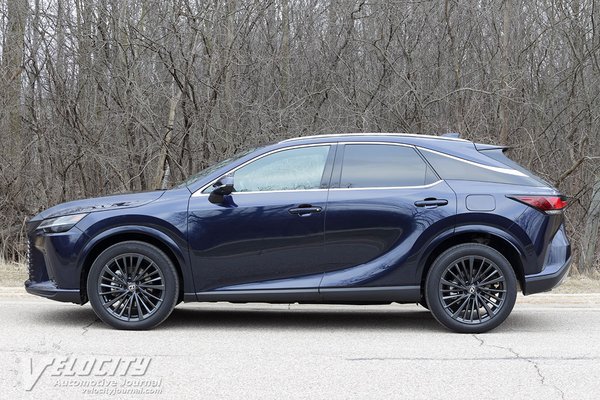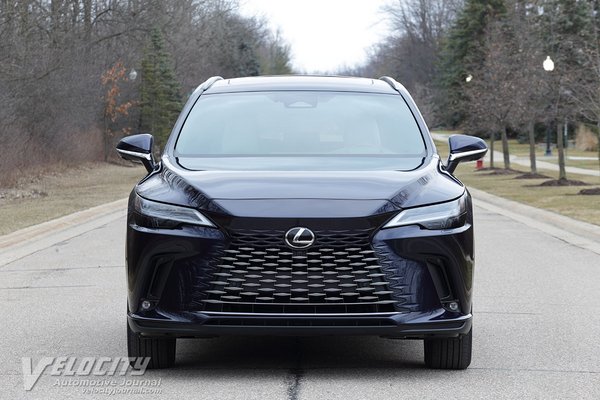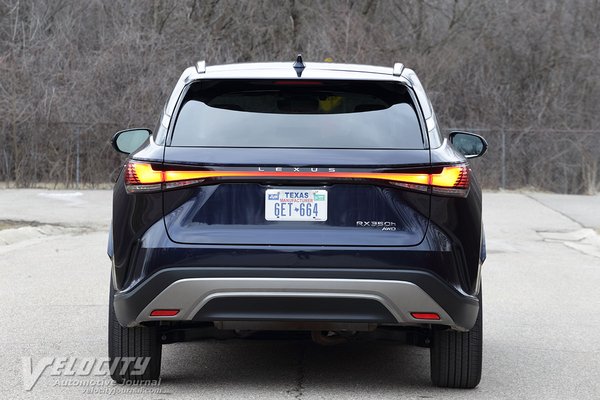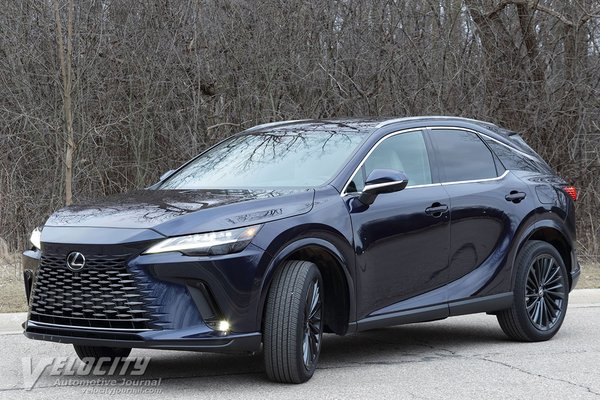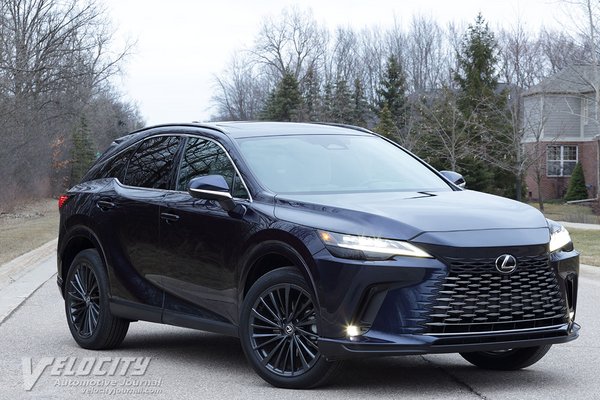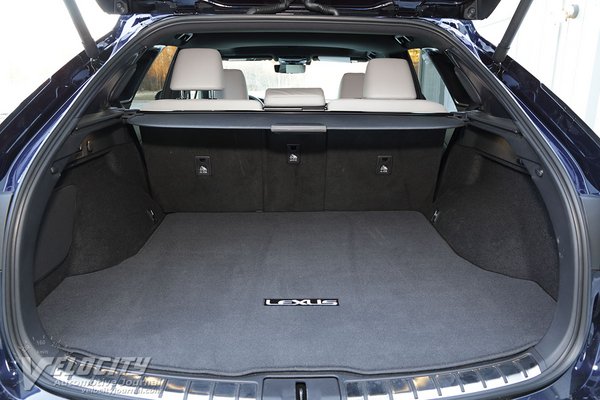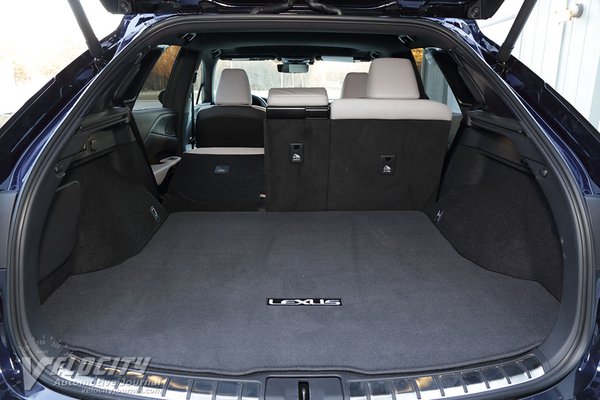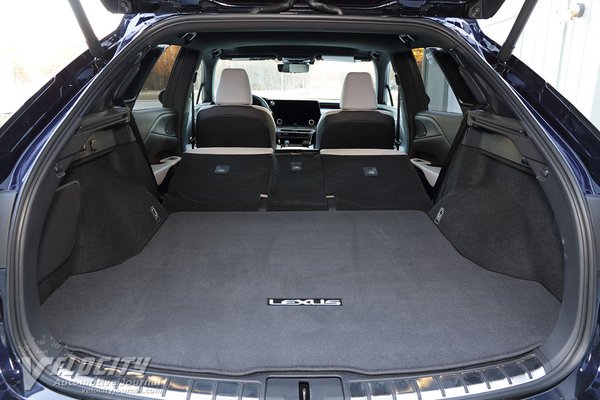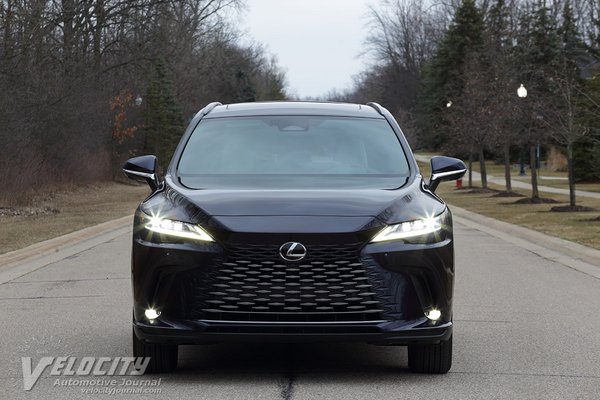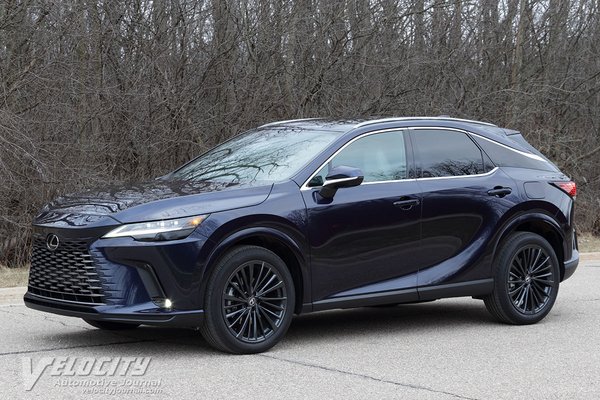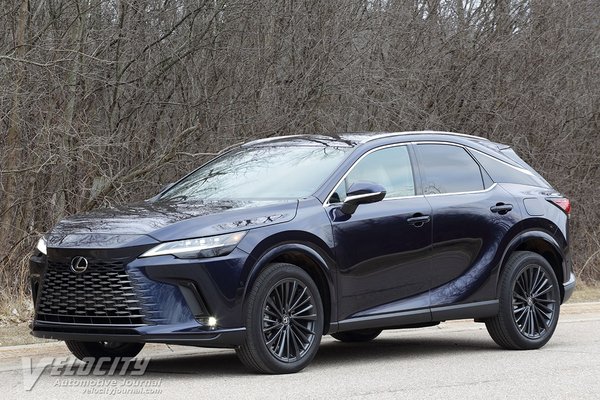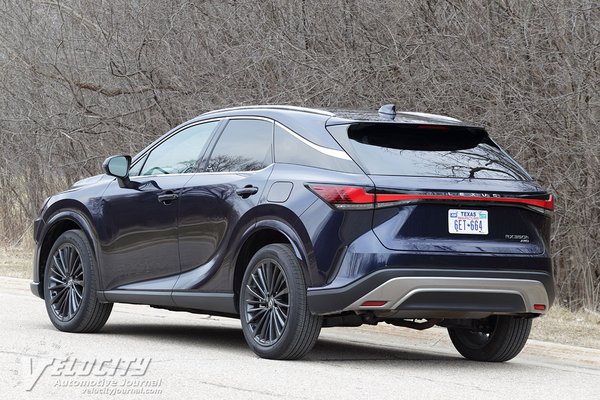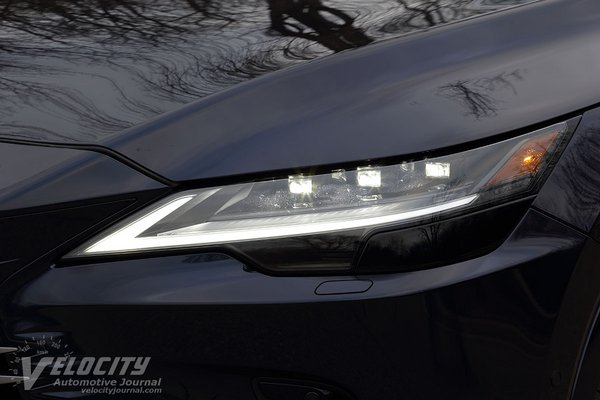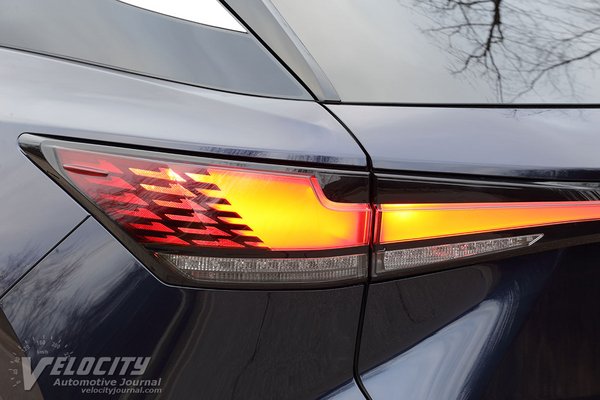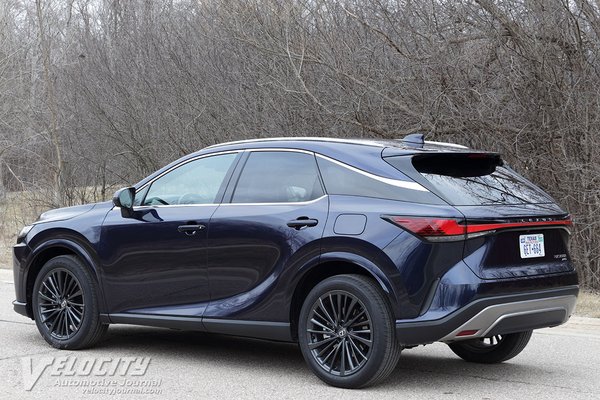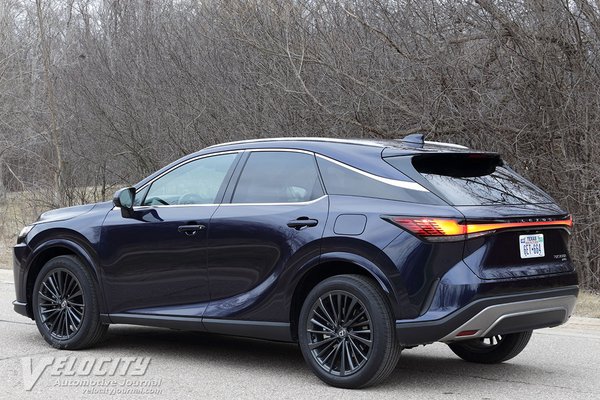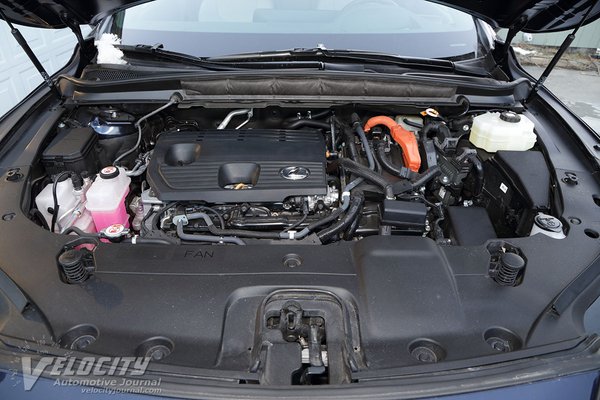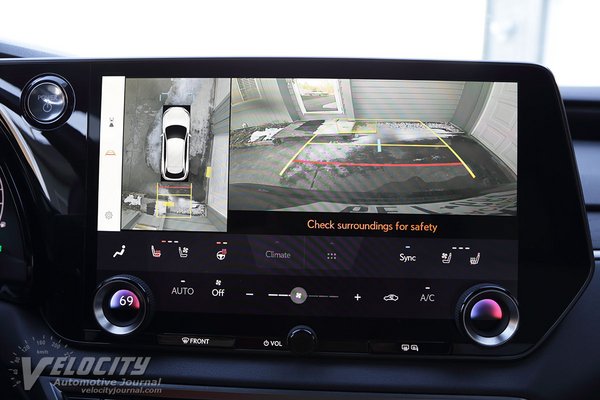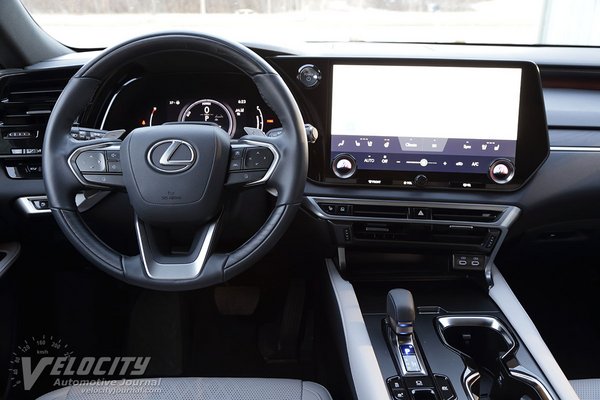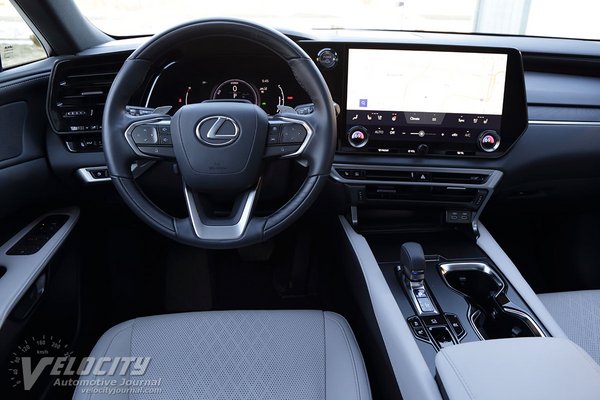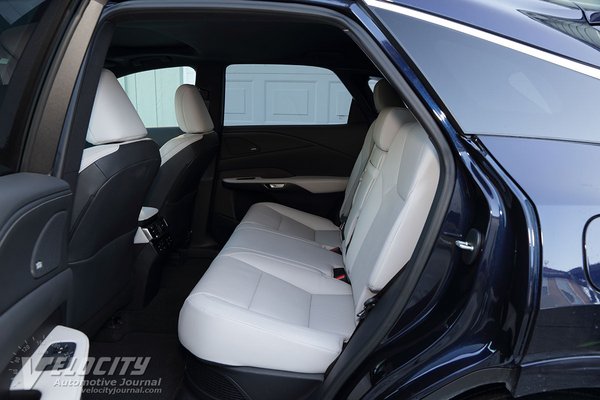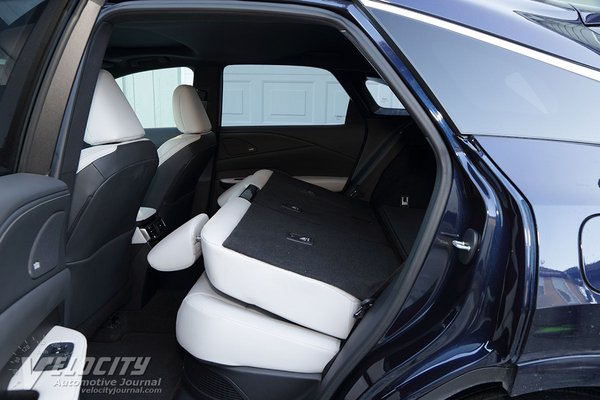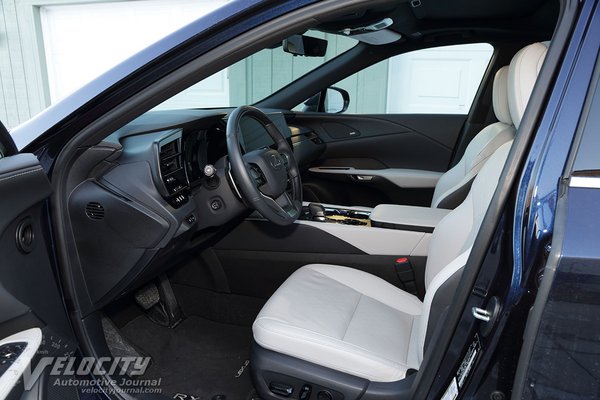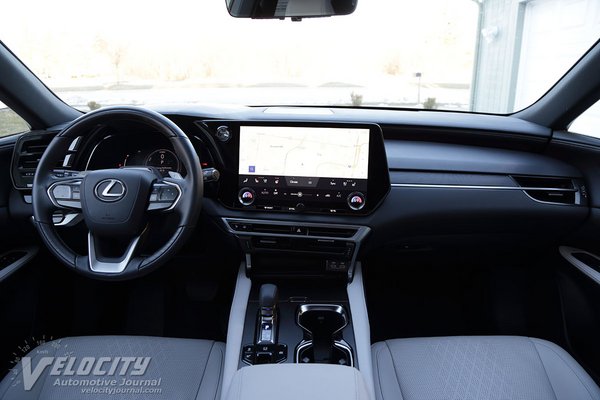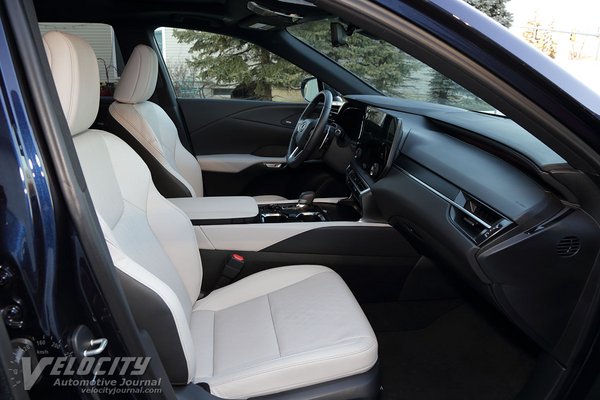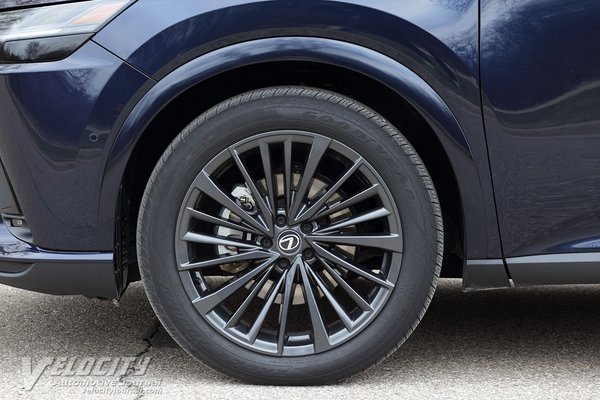2023 Lexus RX 350h Luxury AWD
05/07/2023
Shahed Hussain
The RX is consistently the best-selling SUV in the Lexus model range, and was among the first in this luxury market segment when it debuted in 1998. Redesigned for 2023, the RX lineup consists of three different models: RX 350, RX 350h, and RX 500h. Based on the new GA-K platform, RX and sheds 198 lbs. from its predecessor. Pricing starts at $48,950 (RX 350 FWD) and ranges up to $63,150 (RX 500h F Sport Performance AWD). AWD is standard on all RX hybrid models, and optional on the RX 350.
We tested a RX 350h Luxury AWD ($58,550) equipped with the panoramic view monitor ($800), power rear door ($150), panoramic glass roof and roof rails ($500), triple-beam LED headlamps, headlamp washers and cornering lamp package ($1,565), 21-speaker Mark Levinson audio system ($1,160), heated/ventilated rear seats ($680) and 40/20/40 split power-folding rear seats ($550). Including the delivery fee totaled up the sticker price to $63,955.
Other standard or optional equipment in the test vehicle included: Bi-LED headlamps, 21-in. alloy wheels, semi-aniline leather trimmed seats, paddle shifters, 10-way heated/ventilated power front seats, 14-in. touchscreen display, moonroof, Google Android Auto (TM), and Apple CarPlay(R). Safety technologies consist of panoramic view monitor, lane tracing assist, dynamic radar cruise control, lane departure alert, lane tracing assist, rear cross-traffic braking, and parking assist.
Lexus replaced the 3.5L V-6 in the previous RX with two inline-4 engines: an Atkinson-cycle 185-hp 2.5L (RX 350h), or a 2.4L turbo rated at 275-hp (RX 350) or 271-hp (RX 500h). In the RX 350h, the direct and port-injected inline-4 is topped by dual overhead cam heads and variable valve-timing (VVT-i). Rated at 185-hp @ 6,000 RPM and peak torque of 178 lb.-ft. @ 4,300-4,500 RPM, the normally-aspirated inline-4 is mated to two permanent magnet AC motor-generators. Combined system power is 246-hp @ 6,000 RPM and 233 lb.-ft. @ 4,300-4,500 RPM. A 259V nickel metal hydride (NiMh) battery pack powers the front and rear electric motors. The gas engine and electric motor drive the front wheels via a CVT, but the rear axle is powered only by an electric motor under acceleration or on low traction surfaces. According to Lexus, the RX 350h accelerates from 0-60 mph in 7.4 seconds to a top speed of 112 mph. EPA fuel consumption estimates are 37/34 MPG (city/hwy.) for the RX 350h. We averaged 27 MPG in mostly highway driving conditions. The disappointing fuel consumption is likely due to ambient temperatures around 30-45 deg. F during our test period, which reduce the hybrid system's efficiency.
As before, the RX front suspension consists of MacPherson struts and stabilizer bar. At the rear is a multi-link setup with coil springs, dampers and stabilizer bar. Brakes are all vented discs: 13.39 in. dia. front rotors and 13.39 in. dia. rear rotors. Steering is an electrically-assisted rack-and-pinion setup geared for 2.76 turns lock-to-lock. Goodyear Eagle Touring all-season tires (235/60R21) are mounted on 21-in. alloy wheels. Curb weight of the tested RX 350h Luxury AWD is 4,455 lbs., just 145 lbs. higher than the comparable RX 350 Luxury AWD. Maximum towing capacity is 3,494 lbs. with the optional towing package.
As expected from Lexus, interior materials and build quality are superb. Aluminum accents line the dashboard, steering wheel and center console. The test vehicle's parchment leather seats and 10-way power adjustments offered a superb blend of comfort and lateral support. Ample front headroom readily accommodates passengers over 6 ft. tall. The heated and ventilated rear seats provide excellent comfort and decent legroom for two occupants, but the center position is uncomfortable due to the hard seatback. Rear headroom is acceptable for occupants up to 6 ft. tall.
Lexus continues to use a digital instrument cluster consisting of a center speedometer and powertrain mode indicators, flanked by coolant temperature and fuel level gauges. The leather-wrapped steering wheel has integrated controls for audio, phone, cruise and other vehicle settings. Paddles mounted on the steering wheel enable manual "shifting" of the CVT. A 14" touchscreen infotainment display, canted toward the driver controls most vehicle settings and navigation. Dual knobs adjust interior temperature but other HVAC settings require using the touchscreen. Although most audio settings use the touchscreen, Lexus kept a small volume knob for convenience. Dual USB-C ports are on the center console and a 12V outlet is in the center console compartment. Two cupholders on the center console are located next to the transmission shift lever. Rear passengers benefit from separate climate controls, dual vents, heated and cooled seats, and two USB-C ports.
The RX hybrid powertrain delivers acceptable acceleration in city driving, and decent midrange response at highway speeds. Low speed acceleration is impressive, aided by the torque boost from the electric motors. Compared to the smooth and nearly silent V-6 in the previous RX, the new inline-4 sounds buzzy and unrefined when accelerating, but is unobtrusive at cruising speeds. Powertrain integration between the electric motors and the gas engine is seamless; it is nearly impossible to sense the transition from electric to gas power and vice versa. Four powertrain modes are available: Eco, Normal, Power and EV. Eco mode damps throttle response, so is best suited for relaxed cruising on urban roads. In Manual mode, the CVT simulates a 6-speed automatic, shifting via the steering wheel paddles or console lever. Switching to Sport mode alters the transmission programming to hold a constant RPM at full throttle. We usually left the CVT in Normal mode as we saw minimal value in manual shifting. The RX switches to full EV mode under light acceleration for a few seconds, and when coasting to recharge the battery. Even though the RX has a full EV mode accessible via a button next to the shifter, we saw minimal value since it is only usable at low speed.
Lexus continues its tradition of suspension tuning to deliver an exceptional ride that glides over most patched road surfaces. Moderate understeer accompanied by significant body roll encourages a relaxed driving style. Customers looking for sharper handling should consider an F Sport (RX 350 or RX 500h). The steering transmits road surface textures effectively, but is damped to minimize kickback. Equipped with all-vented discs, the brakes deliver excellent stopping power and progressive pedal actuation; the transition from friction to regenerative braking is seamless. Living up to the Lexus reputation, the RX is exceptionally quiet: at 80 MPH highway cruising, wind and tire noise are subdued to near silence. At speeds around 75-80 mph, the RX exhibits solid tracking on the highway, but above 85 mph the RX needs significant steering corrections to maintain a straight path. Acceleration at highway speeds is adequate when lightly loaded, but the hybrid powertrain cannot match the midrange response of the previous 3.5L V-6.
Until now, the RX has always been matched to a superb V-6, but the switch to an inline-4 may disappoint current owners. As a hybrid, the RX 350h could be exceptionally efficient, especially considering its 2+ ton curb weight, but low ambient temperatures minimize its fuel consumption advantages. To encourage RX hybrid sales, Lexus has set the identical MSRP for both the RX 350h AWD and the non-hybrid RX 350 AWD. Our preference for higher performance, especially at the same price, inclines us to recommend the turbocharged RX 350 AWD. But Lexus knows that RX hybrid owners seek superior efficiency, and for them this RX is the logical choice.

